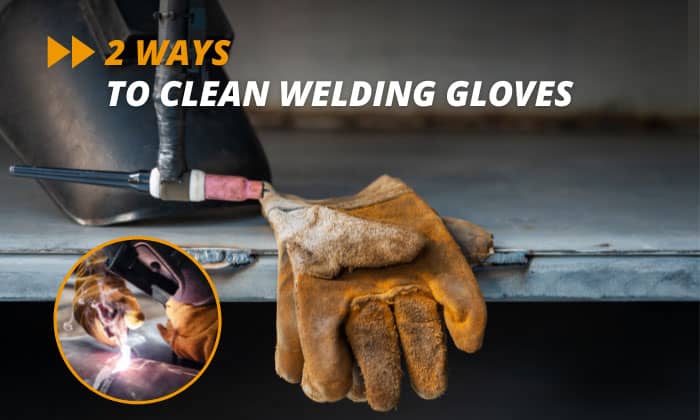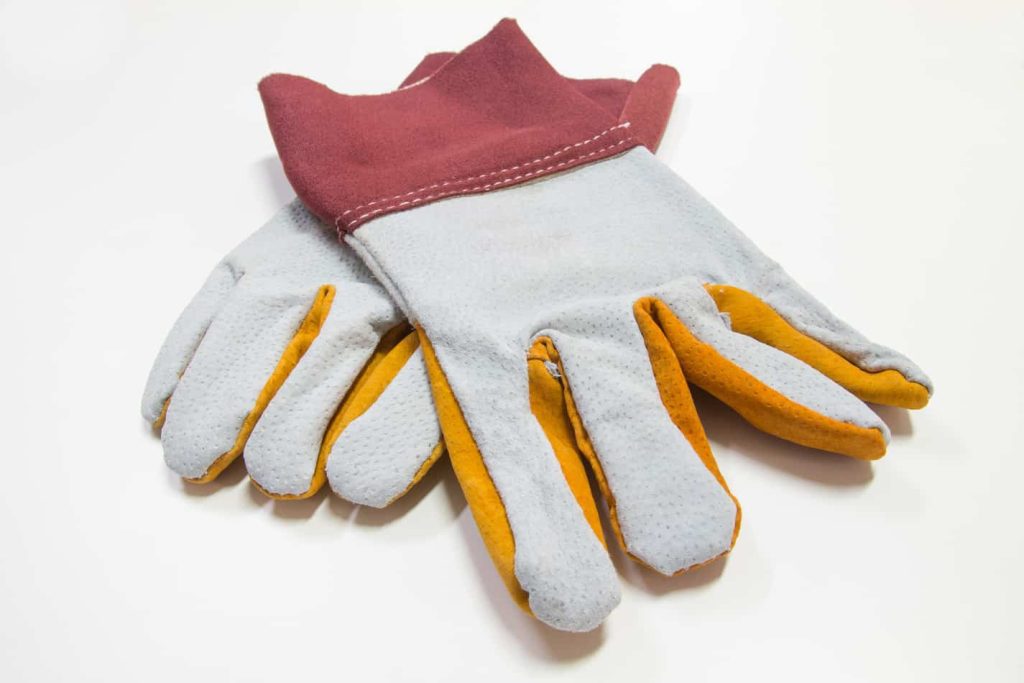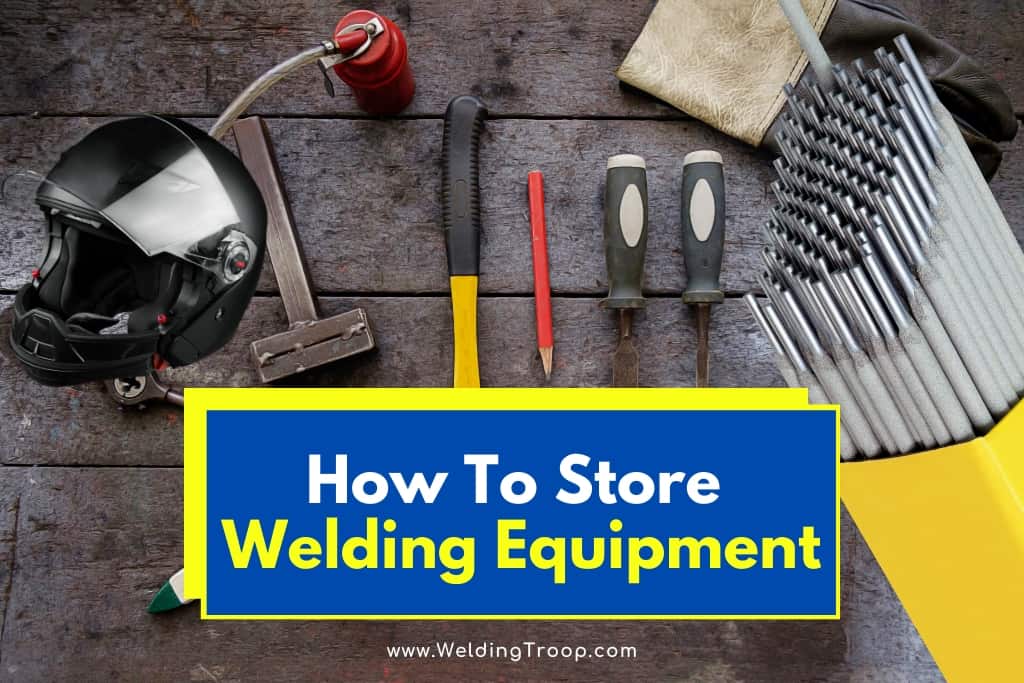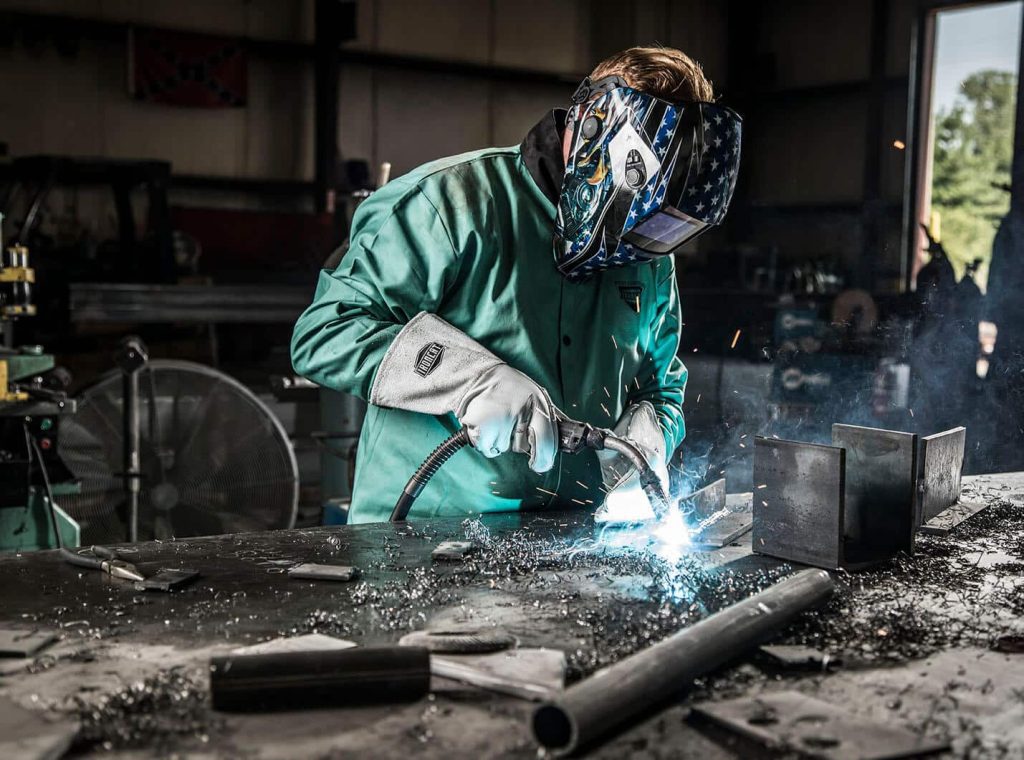Maintaining and storing welding gloves is essential for maximizing their lifespan and effectiveness. In this article, we will explore the various steps and tips to ensure that your welding gloves stay in great condition for years to come. From cleaning methods to proper storage techniques, we’ve got you covered. So, if you’re wondering how to keep your welding gloves in top shape, read on to discover our expert advice.
Why is Proper Maintenance and Storage Important?
Proper maintenance and storage of welding gloves are essential for several reasons. Whether you’re a professional welder or a hobbyist, taking care of your gloves will not only prolong their lifespan but also ensure your safety and performance. By following these tips and guidelines, you can prevent damage and deterioration, ultimately saving you time and money in the long run.
Prolonging the Lifespan of Welding Gloves
Welding gloves are designed to withstand extreme heat and protect your hands from sparks, hot metal, and other potential hazards. However, without proper maintenance, they can wear out quickly, requiring frequent replacements. By maintaining and storing your welding gloves correctly, you can significantly prolong their lifespan, maximizing their value and usage.
Ensuring Safety and Performance
Safety should always be the top priority when it comes to welding. Well-maintained gloves provide reliable protection, shielding your hands from burns, cuts, and other injuries that can occur during welding. When gloves are properly maintained, they maintain their structural integrity and offer optimal performance, allowing you to work with confidence and precision.
Preventing Damage and Deterioration
Welding environments can be tough on gloves, exposing them to heat, sparks, abrasion, and possible chemical exposure. Without proper maintenance and storage, gloves can become damaged and deteriorate quickly. By implementing proper care techniques, you can prevent premature wear, tears, and degradation, ensuring your gloves remain in optimal working condition.
Precautions Before Maintaining and Storing Welding Gloves
Before diving into the specific maintenance and storage methods, it’s important to take a few precautions to ensure your safety and the effectiveness of the process.
Inspecting for Defects or Wear
Before cleaning or storing your welding gloves, it’s crucial to inspect them for any defects or excessive wear. Look for signs of tears, holes, or loose stitching. Additionally, check for any areas that may have melted due to prolonged exposure to heat. Identifying these issues beforehand will help you determine if the gloves need repair or replacement.
Cleaning Off Debris and Contaminants
Before delving into a thorough cleaning, remove any visible debris or contaminants from the gloves. Gently wipe off any loose dirt, metal shavings, or other particles using a soft cloth or brush. This step ensures that the cleaning process is effective and prevents any abrasive materials from damaging the gloves further.
Disconnecting from Welding Equipment
Before beginning the cleaning process, it’s essential to disconnect your gloves from any welding equipment or tools. This not only prevents accidental damage to the gloves but also ensures that the cleaning process is thorough and allows for easy handling.
This image is property of www.edcmag.com.
How to Clean Welding Gloves
Cleaning welding gloves is a relatively straightforward process, but it’s crucial to use the right techniques to prevent damage. The following steps will guide you through cleaning your gloves effectively and safely.
Using a Mild Soap and Water Solution
To clean your gloves, start by preparing a mild soap and water solution. Mix a small amount of mild dish soap or hand soap with warm water in a basin or sink. Make sure the water is not too hot, as excessive heat can damage the gloves. The mild soap will help break down any grease or contaminants on the gloves without causing harm.
Avoiding Harsh Chemicals or Abrasives
It is important to note that harsh chemicals and abrasives should be avoided when cleaning welding gloves. These substances can degrade the materials or strip away protective coatings, compromising the gloves’ performance and lifespan. Stick to mild soaps and gentle cleaning methods to ensure the longevity of your gloves.
Rinsing and Drying Properly
After soaking and gently scrubbing your gloves with the soap and water solution, rinse them thoroughly to remove any remaining soap residue. Ensure that all soap is removed to prevent skin irritation or damage to the gloves when used. Once rinsed, gently squeeze out excess water and lay the gloves flat or hang them in a well-ventilated area to air dry. Avoid using direct heat sources, as high temperatures can cause shrinking or damage to the gloves.
Storing Welding Gloves
Proper storage is just as important as maintenance to ensure the longevity and effectiveness of your welding gloves. Follow these tips to store your gloves correctly and protect them from unnecessary wear and tear.
Choosing an Appropriate Storage Location
Find a cool, dry, and clean location to store your welding gloves. Proper ventilation is essential to prevent moisture buildup, as dampness can promote the growth of mold or mildew and degrade the materials. Additionally, avoiding exposure to direct sunlight will help prevent fading or weakening of the gloves. Consider using a designated storage box or bag to keep your gloves protected and organized.
Avoiding Exposure to Moisture or Sunlight
Moisture and sunlight can wreak havoc on welding gloves, causing them to deteriorate prematurely. When exposed to moisture, the materials can become weak and lose their heat resistance capabilities. Furthermore, prolonged exposure to sunlight can lead to fading, weakening, and potential degradation of the gloves. Shielding your gloves from these elements will help maintain their integrity and extend their lifespan.
Keeping Gloves Away from Sharp Objects
When storing your welding gloves, ensure that they are kept away from sharp objects or rough surfaces that could puncture or tear them. Consider using a separate compartment or pocket within your storage box or bag to protect them from accidental damage. By preventing contact with sharp objects, you can avoid unnecessary wear and maintain the integrity of your gloves.
This image is property of weldingmastermind.com.
Additional Tips for Glove Maintenance
In addition to regular cleaning and proper storage, there are a few additional tips and practices that can help you maintain your welding gloves effectively.
Inspecting for Damage After Use
After each use, inspect your gloves for any signs of damage or wear. Check for holes, tears, worn-out stitching, or any visible degradation. Identifying any issues early on will allow you to take prompt action and address them before they worsen or compromise the gloves’ effectiveness.
Repairing Small Tears or Holes
If you notice any small tears or holes in your welding gloves, it’s recommended to repair them promptly. Using specialized heat-resistant thread and a needle, carefully sew up the damaged area. By repairing small tears or holes, you can prolong the lifespan of your gloves and maintain their protective qualities.
Replacing Gloves when Necessary
No matter how well-maintained your welding gloves are, there will come a time when they need to be replaced. Continuously monitor the condition of your gloves and look for signs of significant wear, such as extensive damage, frayed seams, or reduced heat resistance. When you notice these signs, it’s crucial to invest in a new pair of gloves to ensure your safety and maintain optimal performance.
Importance of Proper Glove Fitting
Proper glove fitting is vital to ensure optimal dexterity, comfort, and overall safety. Ill-fitting gloves can hinder your ability to perform precise movements and may cause hand fatigue or strain. Consider the following reasons why proper glove fitting is essential.
Ensuring Optimal Dexterity and Comfort
Welding requires intricate hand movements and precise control. Ill-fitting gloves can restrict the movement of your fingers, affecting your ability to operate tools and manipulate materials accurately. By wearing gloves that fit properly, you can maintain optimal dexterity and comfort, facilitating seamless workflow and minimizing the risk of errors.
Reducing Hand Fatigue and Strain
Long hours of welding can take a toll on your hands, leading to fatigue and strain. Gloves that are too tight can constrict blood flow, causing discomfort and increasing the likelihood of muscle fatigue. Conversely, gloves that are too loose can result in constant readjustment or grip instability, also causing hand fatigue. Properly fitting gloves distribute pressure evenly, reducing the strain on your hands and enhancing your overall comfort throughout prolonged welding sessions.
Selecting the Right Size of Welding Gloves
To ensure proper glove fitting, it’s crucial to select the right size. Sizes may vary depending on the brand, so refer to the manufacturer’s sizing chart. Measure the circumference of your palm, excluding the thumb, to determine your glove size. When between sizes, it’s generally recommended to opt for the larger size to prevent constriction and promote comfort.
This image is property of weldingtroop.com.
Using Protective Coatings or Creams
In addition to regular maintenance, utilizing protective coatings or creams can offer added benefits to your welding gloves. These products can enhance heat resistance, moisturize leather gloves, and extend the lifespan of your gloves when used correctly.
Applying Heat-Resistant Coatings
Heat-resistant coatings can provide an additional layer of protection for your gloves, enhancing their heat resistance capabilities. These coatings are typically available in liquid or spray form and can be easily applied to the exterior surface of the gloves. Follow the product instructions carefully, ensuring thorough coverage while avoiding excessive application that could affect dexterity or comfort.
Using Moisturizers for Leather Gloves
Leather welding gloves require additional care to maintain their suppleness and durability. Applying a suitable leather moisturizer or conditioner can prevent the leather from drying out, cracking, or becoming stiff. Use a small amount of the moisturizer and work it into the leather gently, allowing it to be absorbed. Avoid using excessive amounts, as it can leave residue and affect grip or dexterity.
Testing the Coatings for Compatibility
Before applying any protective coatings or creams, it’s crucial to test them on a small inconspicuous area of the gloves. This test ensures that the coating or cream does not cause any adverse effects, such as discoloration, stiffness, or reduced heat resistance. If any negative effects are observed, discontinue use and seek alternative maintenance methods suitable for your specific gloves.
Maintaining Glove Insulation and Heat Resistance
The insulation and heat resistance properties of welding gloves are critical in safeguarding your hands from extreme heat. Proper maintenance ensures that these properties are preserved, allowing you to work safely in high-temperature environments.
Avoiding Excessive Exposure to Heat
Although welding gloves are designed to withstand high temperatures, prolonged exposure to extreme heat can degrade their insulation and heat resistance capabilities. To maintain these properties, avoid exposing your gloves to excessive heat for extended periods. Take regular breaks if working in intense heat conditions to give your gloves a chance to cool down and recover.
Cleaning and Inspecting Insulated Linings
Insulated linings are commonly found in welding gloves, providing an additional layer of protection against heat. It’s important to clean and inspect these linings regularly to ensure they remain in good condition. Gently brush off any loose debris or particles and inspect for any signs of damage or wear. Promptly address any issues to prevent further deterioration and maintain the insulation properties of your gloves.
Replenishing Heat Resistance as Needed
Over time, the heat resistance properties of welding gloves may diminish due to wear and tear. To ensure your gloves remain effective in high-temperature environments, consider replenishing the heat resistance as needed. Specialized heat-resistant coatings or sprays can be used to reinforce the gloves’ ability to withstand extreme heat. Follow the manufacturer’s instructions and guidelines when applying these products, ensuring proper coverage and adherence.
This image is property of bindbig.com.
Proper Handling and Storage of Specialty Gloves
In addition to the standard welding gloves, there are specialty gloves designed for specific welding techniques or materials. These gloves require additional care and attention to maintain their unique properties.
Specific Maintenance for TIG or MIG Gloves
TIG (Tungsten Inert Gas) and MIG (Metal Inert Gas) welding techniques often require greater dexterity and precision. Gloves designed specifically for these techniques are typically thinner and more lightweight, allowing for better control. When maintaining TIG or MIG gloves, follow the manufacturer’s care instructions carefully, as these gloves may have specific requirements.
Insulation and Protection for Cut-Resistant Gloves
Cut-resistant gloves provide an additional layer of protection against sharp objects or materials often encountered in welding environments. These gloves are typically made of specialized materials, such as Kevlar or stainless steel mesh. It is essential to handle and store cut-resistant gloves with care to avoid compromising their protective qualities. Avoid exposure to sharp edges or abrasive surfaces that could damage the gloves’ integrity.
Cleaning and Handling Specialty Materials
Some welding gloves are made from specialty materials, such as aluminized fabric or cowhide. These gloves often require unique care and handling to maintain their properties. It is essential to refer to the manufacturer’s care instructions specific to the materials used in your gloves. By following these guidelines, you can ensure that the gloves remain in optimal condition and provide the necessary protection.
The Importance of Regular Replacement
As much as we want our welding gloves to last forever, there comes a time when replacement is necessary. Understanding the signs of wear and tear and the expected lifespan of your gloves is crucial to maintain a high level of safety and performance.
Recognizing Signs of Wear and Tear
Regularly inspect your gloves for signs of wear and tear. Look for frayed seams, holes, excessive thinning of the materials, or deterioration of heat resistance. If the gloves no longer provide adequate protection or impede your ability to work effectively, it’s time to consider replacing them. Promptly replacing worn-out gloves is essential to ensure your safety and maintain optimal performance.
Understanding the Lifespan of Welding Gloves
The lifespan of welding gloves can vary depending on various factors, such as frequency of use, the intensity of welding activities, and the quality of the gloves. However, on average, welding gloves typically last between six months to a year. By understanding the expected lifespan of your gloves, you can gauge when it’s time for replacement and plan accordingly.
Opting for High-Quality Gloves
Investing in high-quality welding gloves is crucial for their longevity and overall effectiveness. High-quality gloves are typically manufactured using durable materials and undergo rigorous testing to ensure their heat resistance and protective properties. Although they may be more expensive initially, their extended lifespan and superior performance make them a worthwhile investment in the long run.
As friendly as we may be, it’s important to always prioritize safety and ensure the proper maintenance and storage of our welding gloves. By following these guidelines, we can prolong the lifespan of our gloves, ensure our safety and performance, and prevent unnecessary damage and deterioration. Remember to always inspect, clean, and store your welding gloves with care, and replacing them when necessary. So let’s get to it and take the necessary steps to keep our welding gloves in optimal working condition. Happy welding!
This image is property of www.safeopedia.com.










































